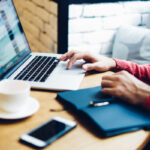Want to start an association? Associations come in many shapes and sizes but have one essential thing in common: building connections between like-minded individuals and providing resources for their members to succeed.
Creating an association can feel like a complicated and daunting process, but it doesn’t have to be! This blog will cover the essentials for starting your association including:
- What is an Association
- 8 Steps to Start an Association
What is an Association?

An association is a group of people unified by a cause or specific purpose. The most common types of associations are:
- Trade associations – A group of businesses or companies operating within the same industry or trade focused on advancing their goals and interests such as influencing policies or networking with like-minded business leaders.
- Professional associations – A group of people who work in the same profession or industry and are organized around collaboration and advancing career interests, growth and development.
- Nonprofit associations – A charitable organization with a mission that serves a specific need or cause.
- Social associations – A group oriented around socializing and building community. Examples include clubs, hobby and interest groups and sororities.
8 Steps to Start an Association
Here are the key steps to start an association with a strong foundation for long-term success.
1. Determine your goals.

Determining your goals is an essential step to creating an association. Your goals form the vision and mission of your organization that ultimately motivates your members. It also gives clarity to your association’s “why”: what makes your association important and the motivations behind why it’s being created in the first place.
When creating your goals, ask yourself and your founding members the following questions:
- What need are you trying to address?
- Are other associations already fulfilling this need?
- What kind of members are you trying to attract?
- How will you provide value to your members?
Make your answers as precise as possible and use this information to define short, medium and long-term SMART goals (Specific, Measurable, Achievable, Relevant, and Time-bound).
2. Create a business plan.
A business plan provides a concise and detailed overview of your association’s essentials before you hit the ground running! It also:
- Hones your mission and vision
- Helps you anticipate possible roadblocks
- Sets a clear roadmap for goals, objectives and tracking accomplishments
- Provides transparency, organization and team unification
- Helps secure future sponsorship, funding, attract board members and more
Your business plan should include these key elements:
- Executive Summary – A thorough and distilled overview of what your business plan covers. You’ll want to write your summary after you’ve completed the rest of your business plan. Include key highlights like:
- Your mission and vision
- Your ideal member profile
- Financial plan including funding requests
- Your competitive advantage
- Products and Services – Your products and services section communicates how you’re serving your unique audience, as well as how you plan to meet their needs and support their goals. Include items like your different membership levels, features and services, benefits, and how you’ll engage with members.
- Marketing Plan – Your marketing plan outlines quarterly goals, metrics for success, and strategies and tactics for reaching your ideal member profile and generating revenue to accomplish your goals in Step 1. Include items like your association membership pricing and a marketing calendar that covers your content plan, events, initiatives and collaborations.
- Overview of Operations – This section will cover your day-to-day operations, including your location, equipment, technology, staffing and anything else related to your association’s execution and how it will work.
- Financial Plan – Your financial plan should include elements like:
- Sales forecast – How many memberships are you hoping to secure over a given period?
- Expense budget – Includes expected costs, ongoing costs and associated costs.
- Balance sheet (Assets and liabilities) – An overview of your association’s net worth and financial position.
- Cash flow statement – Cash projections for each month, quarter and year to help form your budget.
- Break-even analysis and business ratios – Outlines your fixed costs relative to your profit to give insight into your revenue and potential costs against your growth and profits.
- Operation plan – Describes your association’s operational needs such as staffing output and related costs.
3. Recruit your board.
When you start an association, board members play a crucial role in your association’s growth and success. Your board members should have varied but specific skill sets and experience that can help you achieve your association’s goals. They should also be a value match and align with your association’s mission and vision. Here’s how to start your board member recruitment:
Create a job description for each role
Describe the role’s function, value and how it impacts your association’s success. Include the time frame of the role, duties, benefits, time commitment and specific traits, skills or experience you’re looking for. You may want to fulfill roles like:
- Board chair
- Secretary/Committee Chair
- Legal adviser
- Financial advisor/treasurer
- Events manager
- Marketing manager
Spread the word
Now that you’ve refined your job description, start recruiting your board members via:
- Referrals/word of mouth
- Recruitment agencies
- Social media
- Job portals like Linkedin, Indeed and Google Jobs
- Resources like Altruvest Board Match (Canada and limited US availability)
Referrals from your existing network and supporters remains the best recruitment strategy. Not only is there likely an existing value match, but a recent study has shown that candidates that come through referrals are hired at a rate of 30% rather than 7% with their counterparts.
Evaluate your board candidates
Gather a team to evaluate your prospects and prepare questions ahead of time like:
- What do you know about our association?
- Why is our association’s mission and vision important to you?
- What skills, experience, connections and resources will you bring to this role? Note: Be sure to ask them about their fundraising experience!
- What issues and trends do you think are most important to keep top of mind for our association?
- How much time are you able to commit to this role?
Select your new board members.
Once you’ve found your ideal board members, have them sign a Board Member Agreement. You may want to use this template from the Local Initiatives Support Corporation.
4. Recruit your staff.
Hiring staff can help tackle the administrative work and organization that comes with running an association. Your staff play a necessary role in recruiting, marketing, fundraising, organizing events and more. However, staff come with their own costs, especially when it comes to time-intensive tasks that can easily be automated. Be sure to invest in association management software, so you can maximize your staff’s time and energy while minimizing costs. That way, your association can focus on what’s important – accomplishing your goals!
5. File for tax-exempt status.
Associations that have a tax-exempt status don’t pay tax to the IRS, can receive tax-deductible donations and can participate in grant programs. To receive tax exemption, your organization must:
- Have an exempt purpose. Your association’s operations and organization should be solely religious, charitable, scientific, literary or educational. Before you apply for tax-exempt status, be sure to follow these steps as outlined by the IRS.
- Apply for 501(c)(3) tax-exempt status and pay your user fee. The IRS provides detailed information about how to apply for 501(c)(3) status on its website. You’ll need to pay a user fee of $275-$600 to receive your tax-exempt status. Wait time can vary between 3 to 12 months, so take this into consideration when applying.
6. Choose your software.
When you choose to start an association, it takes a lot of work. But with the right tools, you can streamline processes and add ease to member management. This means saving valuable time and minimizing unnecessary costs, so you prioritize your association’s growth. Often times associations need more than a simple CRM and opt for purpose-built software for association. Equip your organization with association management software that has features such as:
- Membership database
- Online dues payment
- Event management
- Website creation
- Reporting and analytics
7. Create an association website.
When you start an association, your online presence is important. With an effective website, you can increase membership (including attracting new members), improve member retention and boost member engagement. When creating association websites, be sure to:
- Keep your branding consistent
- Check that your pages are accessible and mobile-optimized
- Engage your audience with compelling images and videos
- Make it easy for potential members to apply. Include:
- A user-friendly navigation bar
- Forms with only essential fields
- A clear call-to-action button on the top right corner, such as “Become a Member”
8. Start recruiting members.
Now that you have the most crucial pieces in place for creating an association, it’s time to start recruiting members! There are many association membership recruitment ideas to take advantage of including:
- Incentivized referral programs
- Gift memberships
- Time sensitive member promotions or discounts
- Trial memberships or free memberships
- Marketing campaigns
- Partnerships with similar organizations
Whichever member recruitment tactic you decide to use, be sure to promote the benefits associated with each membership level. Popular association benefits include:
- Networking events
- Coupons and discounts
- Volunteer opportunities
- Training and certifications
- Mentorship programs
Once you’ve recruited your first members, be sure to keep them! Sign up for our 7-week email course of member retention best practices.
Wrapping Up: Ensuring Your Association’s Success
Maintaining your association’s success is an ongoing process. After your organization is up and running, keep tabs on your member engagement and member experience. Conduct surveys and get member feedback on a regular basis, invest in member appreciation efforts and offer opportunities for members to be involved and feel connected.
Creating an association takes work, but it’s worth it in the end for the community you’re creating and supporting. So go for it! Start an association. You’ll be happy you did.
Further Reading:
- 20+ Stand-Out Association Management Software Options
- What is an AMS? Understanding Association Management Systems
- Naming Your Association: Best Brainstorming Practices & 5 Top Tips
- Learning Management Systems for Associations: A Guide
- 9 Essential Marketing Strategies for Your Association
- How To Write Association Bylaws: 10 Steps (+ Sample!)
- Association Strategies to Start, Manage and Grow Your Organization!
- Association Membership: What You Need to Know
















